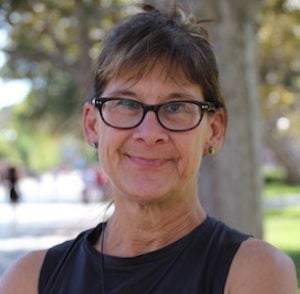Vahe Peroomian, associate professor of physics and astronomy, Dornsife College of Letters, Arts and Sciences.
“Solstice is all about the tilt of Earth’s axis with respect to its path around the sun, and the most dramatic effect we see is solstice signals the time of the returning sun because it starts moving higher in the sky after solstice,” Peroomian said.
He added:
- Earth’s axis is tilted at about 23.5 degrees, accounting for the seasons.
- At winter solstice, the North Pole is pointed farthest away from the sun, and vice versa at the South Pole.
- Oddly, the Earth’s orbit puts the planet nearest the sun at winter solstice.
Peroomian is an expert in space science. His specialty is how geomagnetic storms affect society. He’s an avid photographer and co-author of physics textbooks.
Contact: peroomia@usc.edu or (818) 602-0276
Lisa Bitel, Dean’s Professor of Religion and professor of history at the USC Dornsife College of Letters, Arts and Sciences.
“In ancient times, the solstice was celebrated on every continent. People worked in agrarian and pastoral economies based on a ritual and cyclical annual calendar, so the solstice was a major marking of time,” Bitel said.
She added:
- Pagan solstice celebrations did not directly influence traditions like Christmas.
- Solstice signaled the coming of shorter nights, sunshine, warmth and bounty — welcome change for ancient peoples.
- Today, the solstice is less important due to modern conveniences such as electric lights and central heating.
- Still, people continue to celebrate the solstice at Stonehenge in England, Newgrange in Ireland and other sites.
Bitel is an expert in the cultural and religious history of northern Europe in the early Middle Ages.
Contact: bitel@usc.edu or (213) 821-2150
Linda Hagen, assistant professor of marketing, USC Marshall School of Business.
“There’s a link between the astronomical phenomenon of solstice and the cultural phenomenon of holiday traditions. On the shortest day of the year, people have shared fascination with the change of season, that a world of darkness has passed and there will be light at the end of the tunnel,” Hagen said.
She added:
- Solstice is tied to seasons, which are tied to crop harvests and food.
- End-of-year feasts occur in many cultures due to autumn harvests.
- In ancient Rome, the mid-December Saturnalia festival honored the agricultural deity, Saturn.
- High holidays signal seasonal transitions and shared human experiences, which form traditions.
Hagen is an expert in eating behavior, food consumption and guilt. She teaches and conducts research about food consumption, eating behavior and health.
Contact: linda.hagen@marshall.usc.edu






